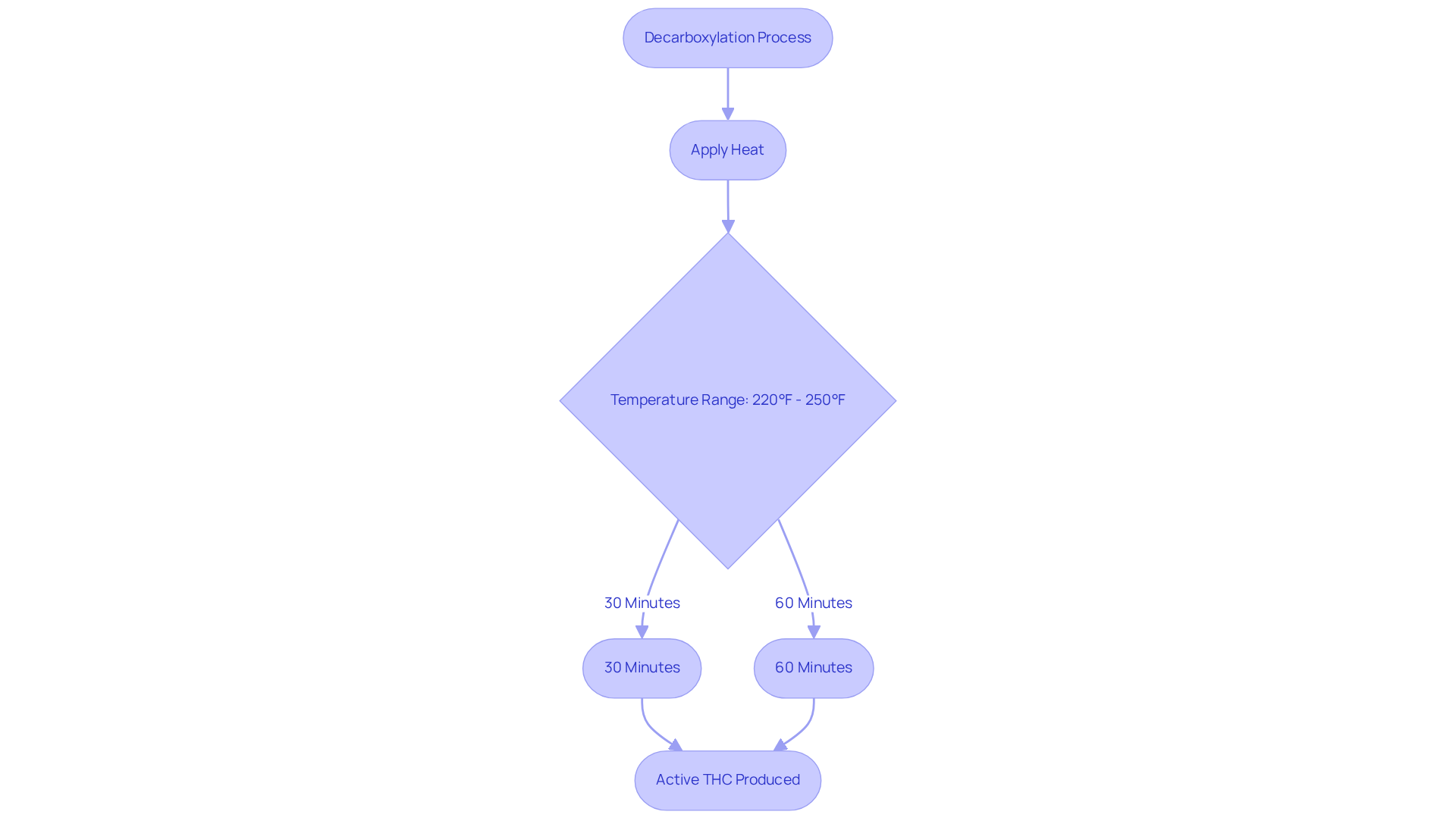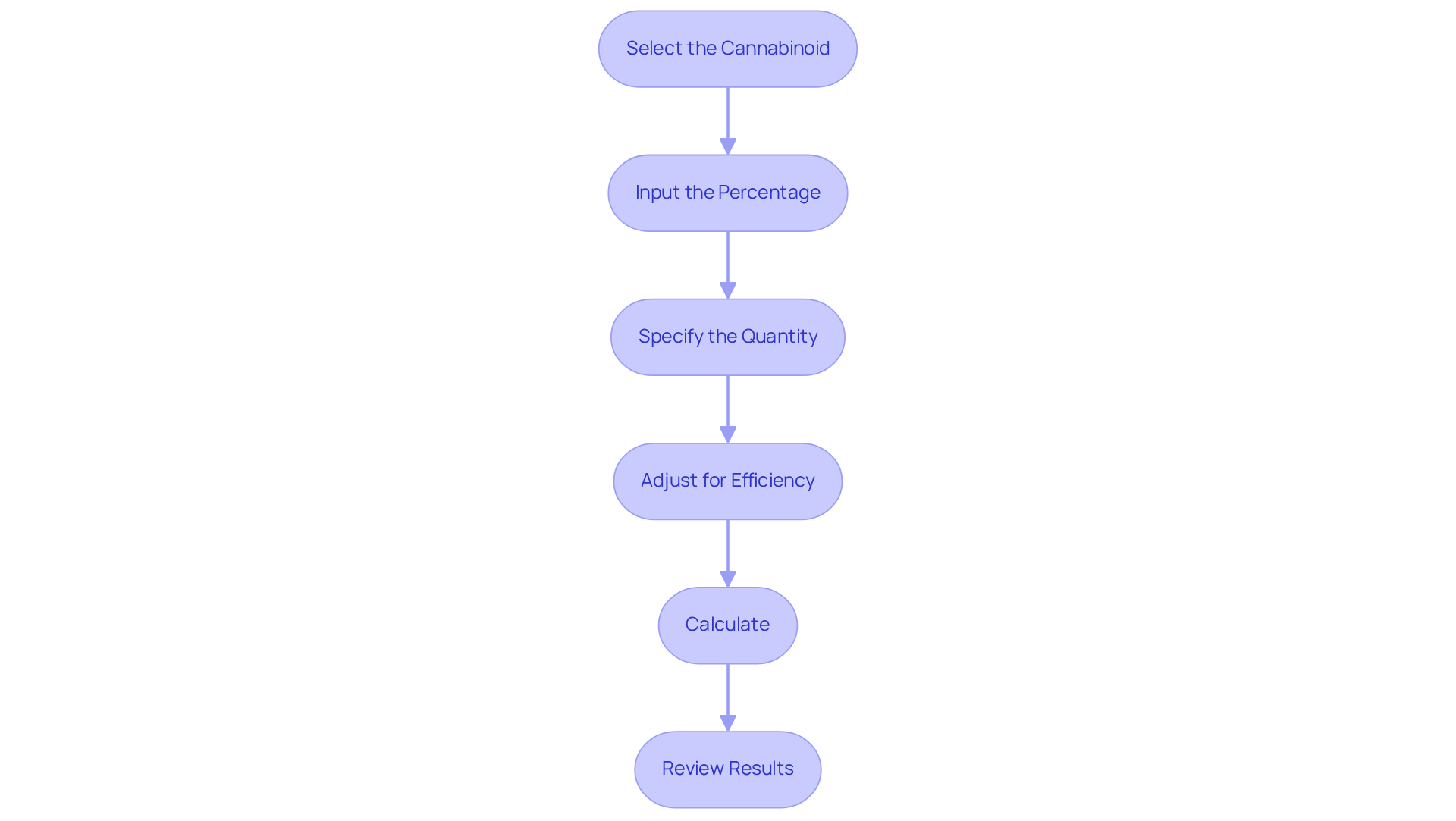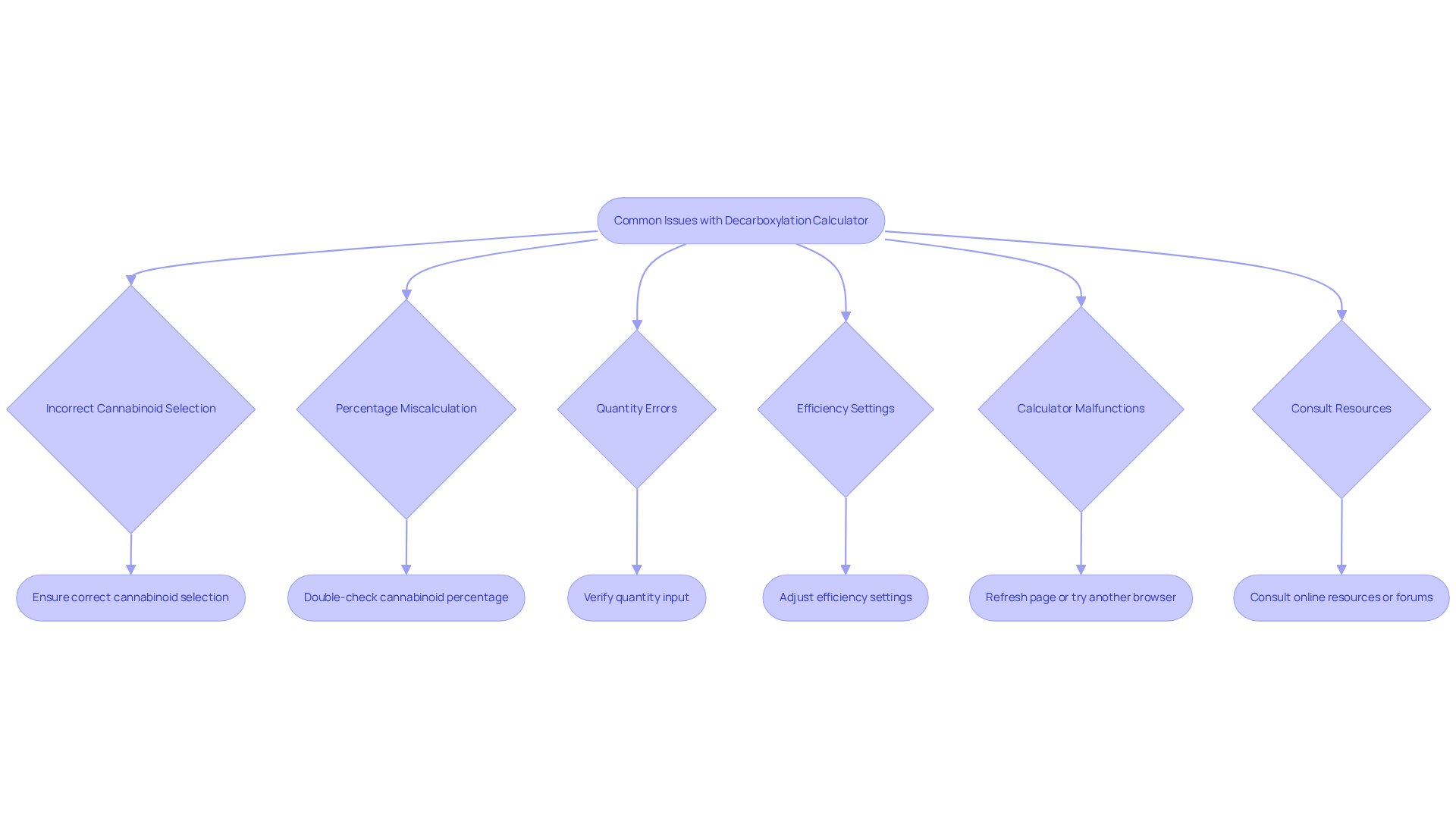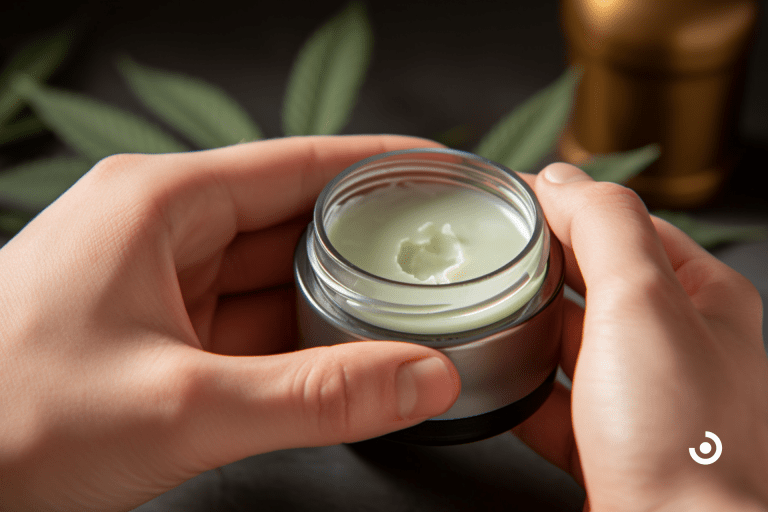Master the Decarboxylation Calculator for Effective Cannabis Use
by Maya Green · June 19, 2025
Master the decarboxylation calculator for optimal cannabis potency and enhanced experiences.
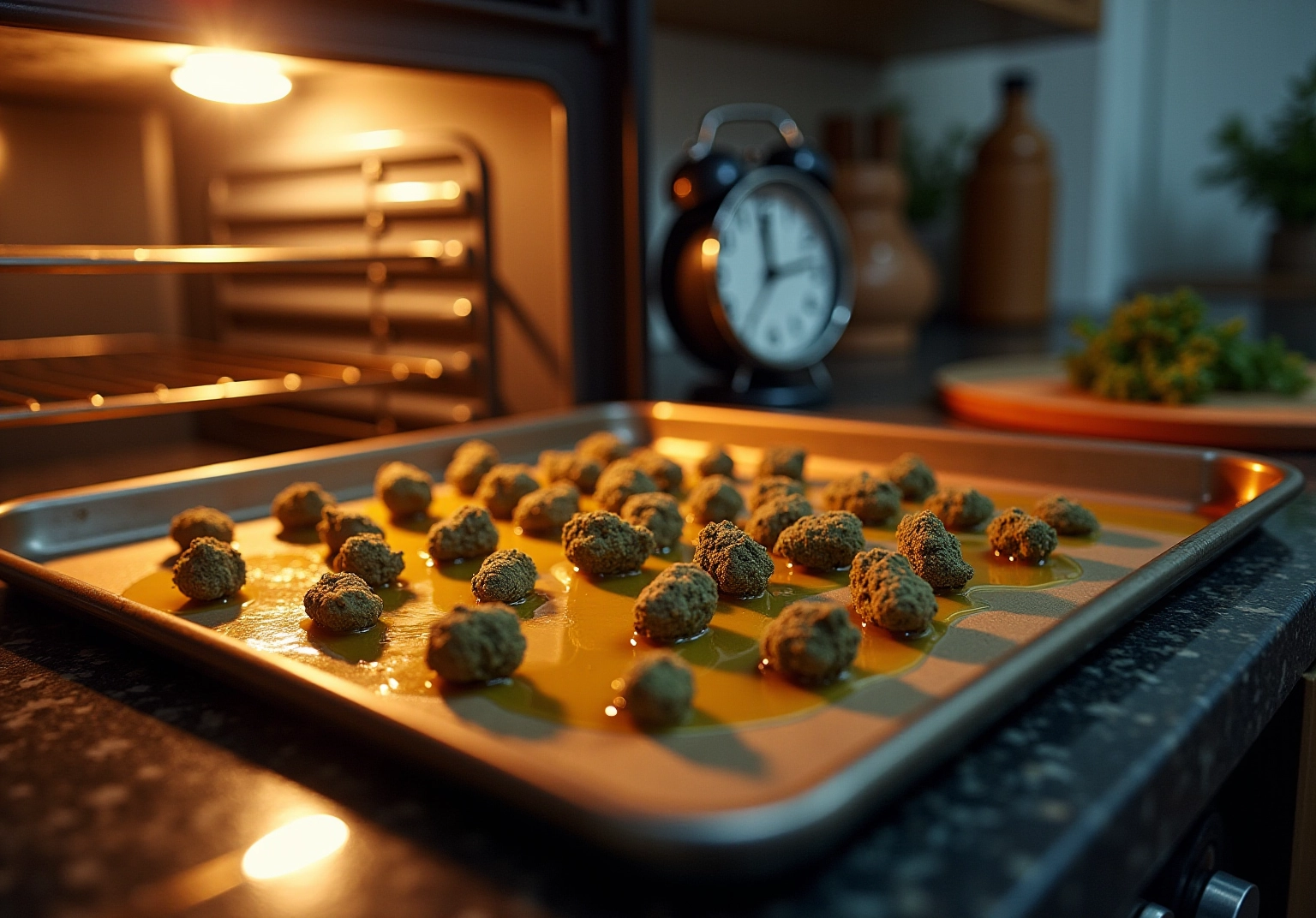
Overview
This article highlights the importance of using a decarboxylation calculator to enhance your cannabis experience by transforming non-psychoactive compounds into their active forms. It’s crucial to understand the decarboxylation process, as this knowledge empowers you to input data accurately into the calculator. By doing so, you can truly maximize the therapeutic benefits of your cannabis products, ensuring that cannabinoids like THC are activated precisely.
You may find that understanding this process can alleviate some of the struggles you face when seeking effective cannabis use. Remember, the goal is to enhance your well-being through informed choices. As you explore this topic, consider how these insights can support your journey towards better health and wellness.
In conclusion, taking the time to learn about decarboxylation and utilizing the calculator can lead to a more fulfilling cannabis experience. Embrace this opportunity to empower yourself with knowledge, and enjoy the benefits that come with the precise activation of cannabinoids.
Introduction
Decarboxylation is truly the key to unlocking the full potential of cannabis, transforming inactive compounds into their psychoactive counterparts. For both enthusiasts and medical users, understanding this process is essential to maximize the effects of marijuana-infused products.
However, navigating the complexities of decarboxylation can feel overwhelming, especially when it comes to accurately measuring cannabinoid potency. It’s important to remember that you are not alone in this journey—many share your concerns.
How can a decarboxylation calculator simplify this process and help you achieve the desired results? By providing clarity and support, it can empower you to enjoy the benefits of cannabis more fully.
Understand Decarboxylation and Its Importance in Cannabis Use
Decarboxylation is a crucial process that involves applying heat to the plant, transforming non-psychoactive compounds like THCA (tetrahydrocannabinolic acid) into their active forms, such as THC (tetrahydrocannabinol). This transformation is vital because raw marijuana doesn’t provide the desired psychoactive effects. Without decarbing, marijuana-infused products, like honey, may have minimal effects. Understanding this process is essential for anyone looking to enhance the benefits of marijuana, especially in edibles or therapeutic uses, and a decarboxylation calculator can be a valuable tool in this regard.
Typically, the removal of a carboxyl group occurs at temperatures between 220°F to 250°F (104°C to 121°C) for 30 to 60 minutes, depending on the desired strength and specific cannabinoids involved. It’s important to remember that mastering this process, which can be assisted by a decarboxylation calculator, allows users to activate the full therapeutic potential of their marijuana products. By doing so, they can lead to more effective and enjoyable experiences.
You may find that taking the time to understand decarboxylation not only enhances your knowledge but also empowers you to make the most of your marijuana journey. Embracing this process can significantly improve the effects of your products, leading to a more fulfilling experience.
Follow Steps to Use the Decarboxylation Calculator
To effectively use a decarboxylation calculator, it’s essential to follow these supportive steps:
- Select the Cannabinoid: Begin by choosing the cannabinoid you are working with, such as THC or CBD. This choice is crucial, as different cannabinoids have unique activation points that can affect your experience.
- Input the Percentage: Next, enter the percentage of the cannabinoid in your raw plant material. For example, if your marijuana contains 20% THC, simply input ’20’. As Emily Kyle emphasizes, understanding the potency of your marijuana flower is vital for accurate dosing, ensuring you feel confident in your choices.
- Specify the Quantity: Indicate the amount of marijuana you are using, measured in grams. If you have 10 grams of cannabis, input ’10’. This step helps you stay mindful of your measurements.
- Adjust for Efficiency: Many calculators allow you to set the effectiveness of your process, usually ranging from 70% to 90%. Adjust this based on your method, whether it’s oven or sous vide. It’s important to remember that under optimal conditions, the average conversion efficiency of THCA to THC is about 70-80%, which can significantly impact your results.
- Calculate: Click the calculate button to see the estimated amount of activated THC or CBD after the conversion process. This will provide you with the total milligrams of active cannabinoid available for use in your edibles or other preparations, helping you make informed decisions.
- Review Results: Take a moment to note the results, which will assist you in assessing the strength of your final product and guide your dosing decisions. Remember, this calculator is intended for educational purposes, and if you have any concerns, it’s always advisable to seek professional medical advice. Your well-being is important, and you deserve support in your journey.
Troubleshoot Common Issues with the Decarboxylation Calculator
You might encounter some common challenges when using a decarboxylation calculator. Let’s explore how to address them with care:
- Incorrect Cannabinoid Selection: It’s essential to ensure you’ve selected the right cannabinoid. Choosing the wrong one can lead to inaccurate strength calculations. Remember, as a study highlights, discrepancies in THC strength can be considerable, with observed THC levels being 23.1% lower than the lowest reported values.
- Percentage Miscalculation: Take a moment to double-check the cannabinoid percentage you’ve entered. If you’re uncertain, don’t hesitate to refer to lab results or product packaging for the most accurate information. Clear labeling is crucial, as inflated THC strength reporting can mislead consumers.
- Quantity Errors: It’s important to verify that the quantity of the substance is correctly inputted. A small mistake in grams can significantly impact the final calculation. Research indicates that user error rates in marijuana strength calculations are common, underscoring the importance of accuracy.
- Efficiency Settings: If your results seem off, consider revisiting the efficiency setting for your process. Adjust it based on your method and experience; for instance, if you’re using a slow cooker, you might want to set it lower than you would for an oven.
- Calculator Malfunctions: Should the calculator not function properly, try refreshing the page or using a different browser. Technical glitches can sometimes disrupt the calculation process.
- Consult Resources: If you continue to face issues, consider consulting online resources or forums for additional support. Many users share their experiences and solutions that can aid you in troubleshooting effectively. As Brian C. Smith, a respected expert in cannabis analysis, wisely states, “Precision in measurements is essential for accurate potency calculations.”
By following these compassionate troubleshooting steps, you can enhance your experience with the decarboxylation calculator and achieve more accurate results. Remember, you’re not alone in this process, and support is always available.
Conclusion
Mastering the decarboxylation process is essential for anyone looking to maximize the benefits of cannabis products. By understanding how to convert THCA into its active form, THC, you can enhance your experiences, whether for recreational enjoyment or therapeutic purposes. The decarboxylation calculator serves as a valuable tool in this endeavor, allowing you to accurately determine the potency of your cannabis and achieve your desired effects.
Throughout this article, we’ve outlined key steps for using the decarboxylation calculator. This includes:
- Selecting the right cannabinoid
- Inputting accurate percentages and quantities
- Adjusting for efficiency
You may find that common troubleshooting techniques can help address potential issues, ensuring a smoother experience. By following these guidelines, you can confidently navigate the decarboxylation process and make informed decisions regarding your cannabis use.
Ultimately, embracing the decarboxylation process empowers you to optimize your cannabis products and elevates your overall experience. With the right knowledge and tools, like the decarboxylation calculator, you can unlock the full potential of your cannabis, leading to more enjoyable and effective outcomes. Engaging with these practices encourages a deeper understanding of cannabis and its benefits, fostering a more informed and responsible approach to its use. Remember, you are not alone on this journey; with each step, you are making choices that support your well-being and enjoyment.
Frequently Asked Questions
What is decarboxylation in cannabis use?
Decarboxylation is the process of applying heat to cannabis, transforming non-psychoactive compounds like THCA into their active forms, such as THC, which provides the desired psychoactive effects.
Why is decarboxylation important?
Decarboxylation is important because raw marijuana does not provide psychoactive effects. Without this process, marijuana-infused products may have minimal effects, making it essential for enhancing the benefits of cannabis, particularly in edibles or therapeutic uses.
What temperatures are typically used for decarboxylation?
Decarboxylation typically occurs at temperatures between 220°F to 250°F (104°C to 121°C) for 30 to 60 minutes, depending on the desired strength and specific cannabinoids involved.
How can a decarboxylation calculator be helpful?
A decarboxylation calculator can assist users in mastering the decarboxylation process, allowing them to activate the full therapeutic potential of their marijuana products, leading to more effective and enjoyable experiences.
What are the benefits of understanding decarboxylation?
Understanding decarboxylation enhances knowledge about cannabis and empowers users to maximize the effects of their marijuana products, resulting in a more fulfilling experience.
Last Updated: July 8, 2025
Get Approved for Your Medical Marijuana Card in Minutes!

Get Your Medical Card
Connect with a licensed physician online in minutes
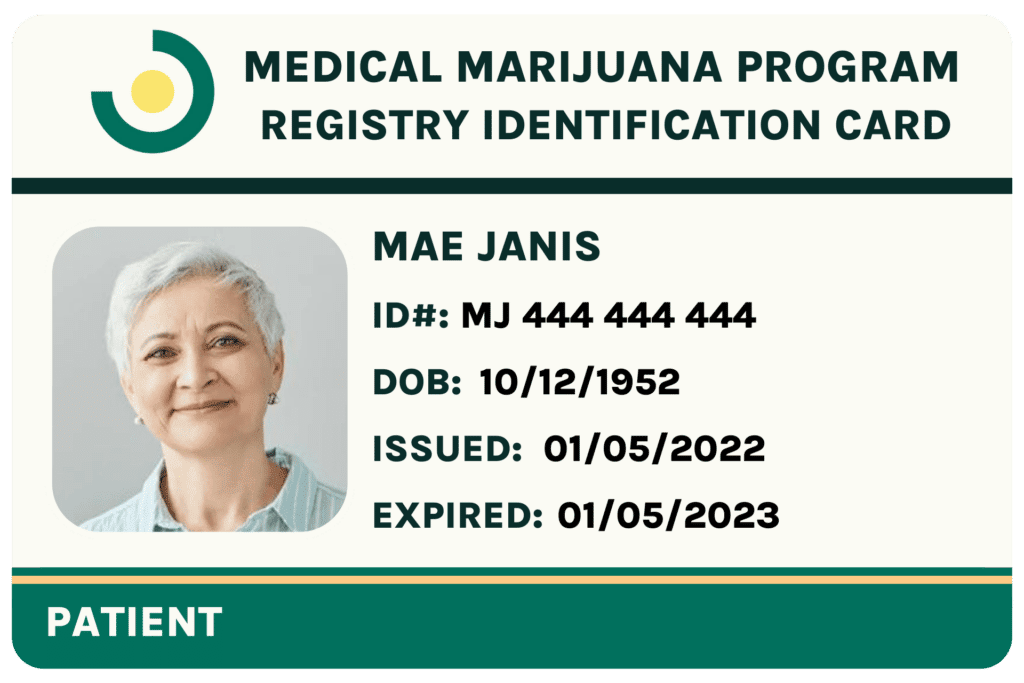
Like This Article?
Share with your friends
Table of Contents
Keep Reading
-
5 Uses For Cannabis Infused Salve
Revolutionize your wellness routine with cannabis-infused salve! Explore the top 5 uses, from pain relief to skincare, and discover the endless possibilities. Click here to unlock the benefits of cannabis-infused salve today!
-
4 Steps to Use Cannabis for Shingles Pain Relief Effectively
Discover effective steps to use cannabis for shingles pain relief and enhance your comfort.
-
5 Reasons to Renew Your MMJ Card Early
Are your medical marijuana card expired or about to expire? Don’t wait until the last minute. Learn why you should consider renewing early—check out these 5 reasons why now!

